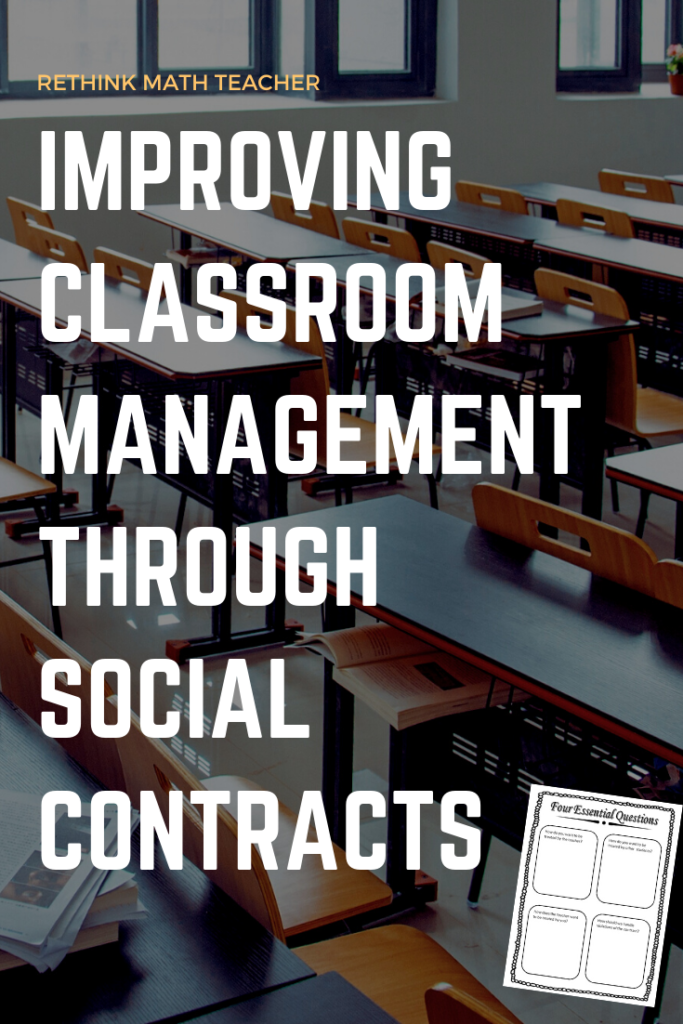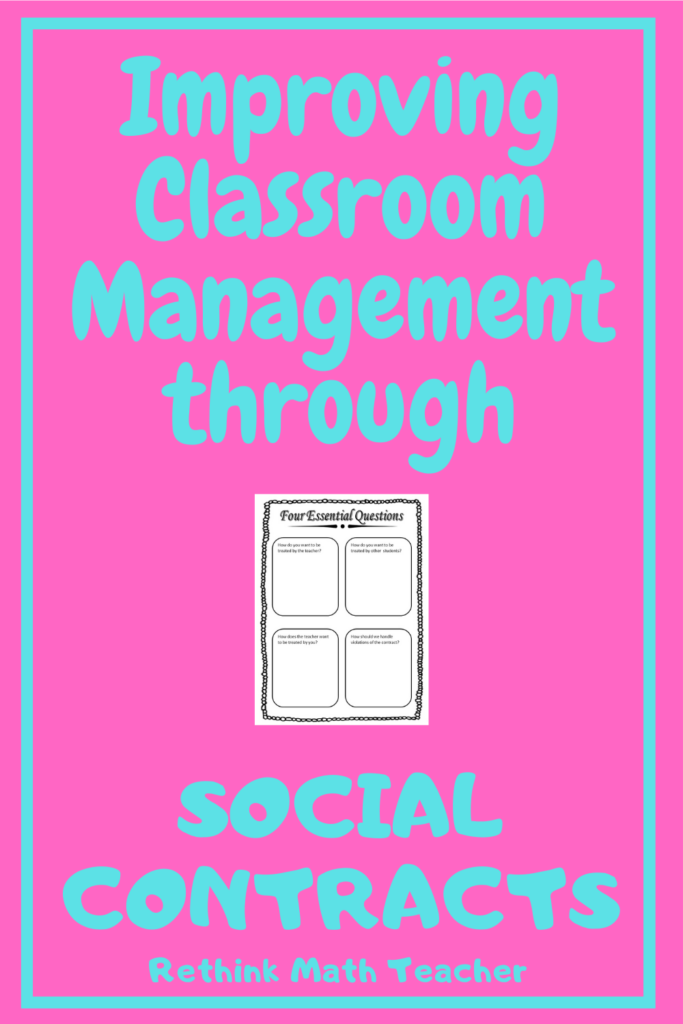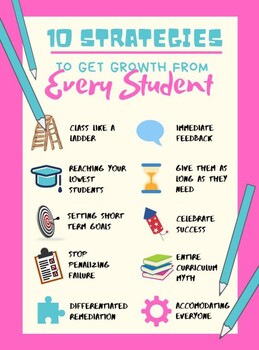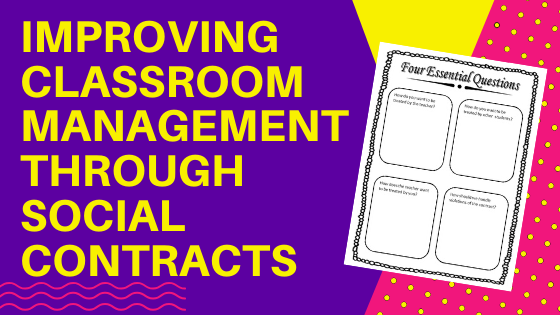
Free Resource at the Bottom of the Page
Social Contracts are becoming a popular classroom management strategy to help create community in the classroom while curtailing misbehavior. Part of the reason they are so successful, is that they help students have a sense of empowerment over their learning, while serving as a constant reminder of classroom expectations.
A social contract is an agreement between all persons in the classroom as to how they will treat each other, as well as what are appropriate consequences for breaking the contract.
We were never taught this!
Most education courses will tell you that it is wise to have the students aid in creating the classroom rules and consequences, that way students feel like they have ownership over the process, and will thus be more likely to commit to it.
However, few of us were ever show how to actually go about doing this.
Worse still, most of us were never shown how to refer back to it throughout the year, to make sure that the commitment stays fresh in everyone’s mind, so that a positive learning environment remains.
The Benefits
When students collaborate to develop their own classroom rules they:
- Feel a sense of empowerment
- Help monitor the rules
- Have ownership over their learning
- Develop community with the other students in their class
- Can communicate with each other (and the teacher) more effectively
How to Implement
A great strategy to help develop the social contract is to give students four essential questions to answer independently. There is a free worksheet to help you with this in my TpT store, linked at the bottom.
The four essential questions are:
- How do you want to be treated by the teacher
- How do you want to be treated by other students
- How does the teacher want to be treated by you
- How will we handle violations of the contract
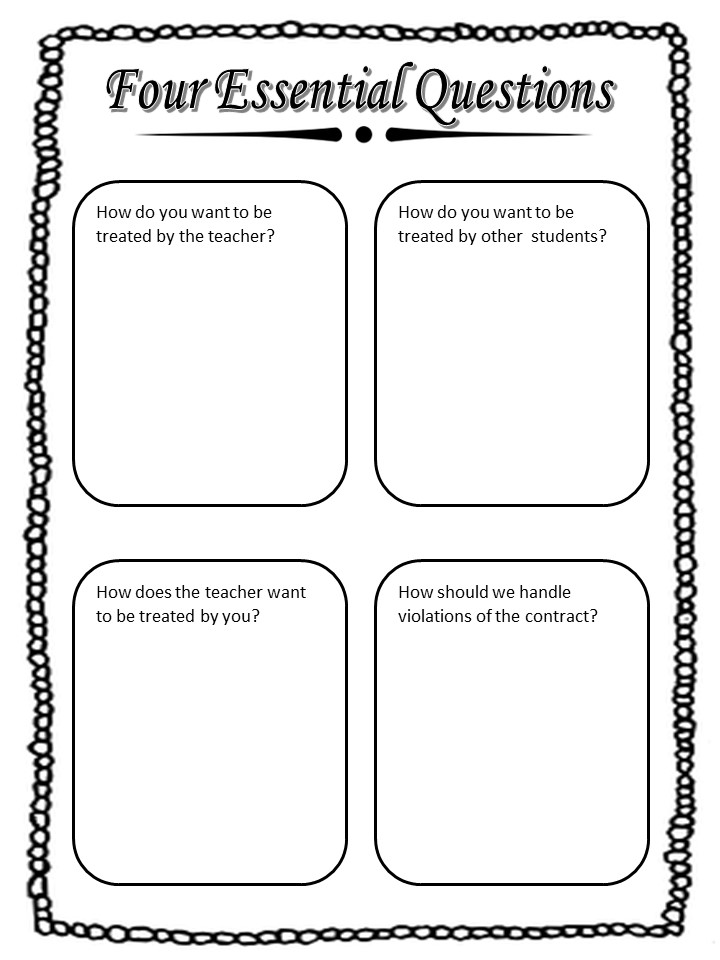
After students answer the questions independently, the class then shares their answers with the class.
As the students share, the teacher should have a large piece of paper for each of the four essential questions and should record reoccurring words or ideas – or really important ones – to help combine and organize everyone’s thoughts and input.
At the end, a social contract should be made, on a large poster (if possible), and students should be encouraged to sign it. The teacher also should sign the contract to demonstrate to the students her commitment to it, and the value of their input.
Referring Back to it
Having a contract posted on the wall will help everyone remember their commitments to each other and to the teacher. However, it also gives the students the ability to reference it when other students are misbehaving., as well as to monitor their own behavior.
A Great Strategy
Another great strategy is to review the main points at the end of each period, and ask the students to reflect on how they did as a class, and give themselves a score.
This way we are constantly referencing back to the contract and its effectiveness can increase.
To get the four essential questions student worksheet, click here
What’s Next?
If you’re looking for more help with classroom management, I have some resources for you, click here.
Another great tool is to like and follow our Pinterest Page on Classroom Management – full of tips and resources.
More Articles on Classroom Management
- Tips for Calling Parents
- Adjusting Student Behavior Through Measurable Goals
- Implementing Your Classroom Procedures
- How to Avoid Over-reacting to Students
- How to Decrease Off-Task Behavior
- The Uncommon Teacher Challenge
- 7 Positive Behavior Reinforcement Strategies
